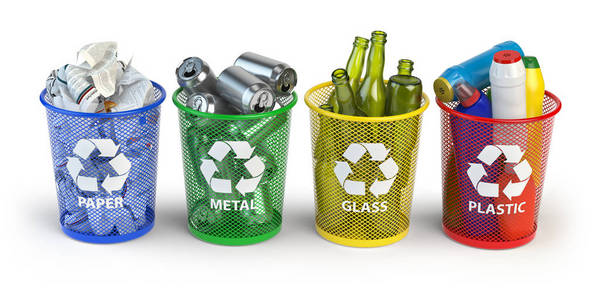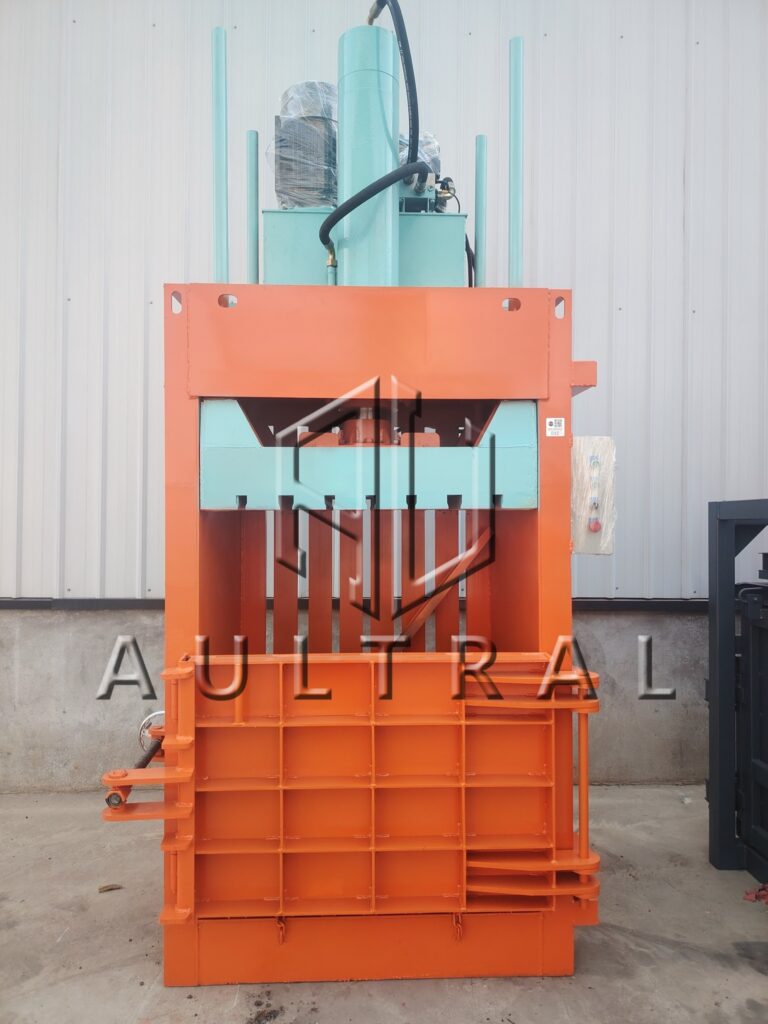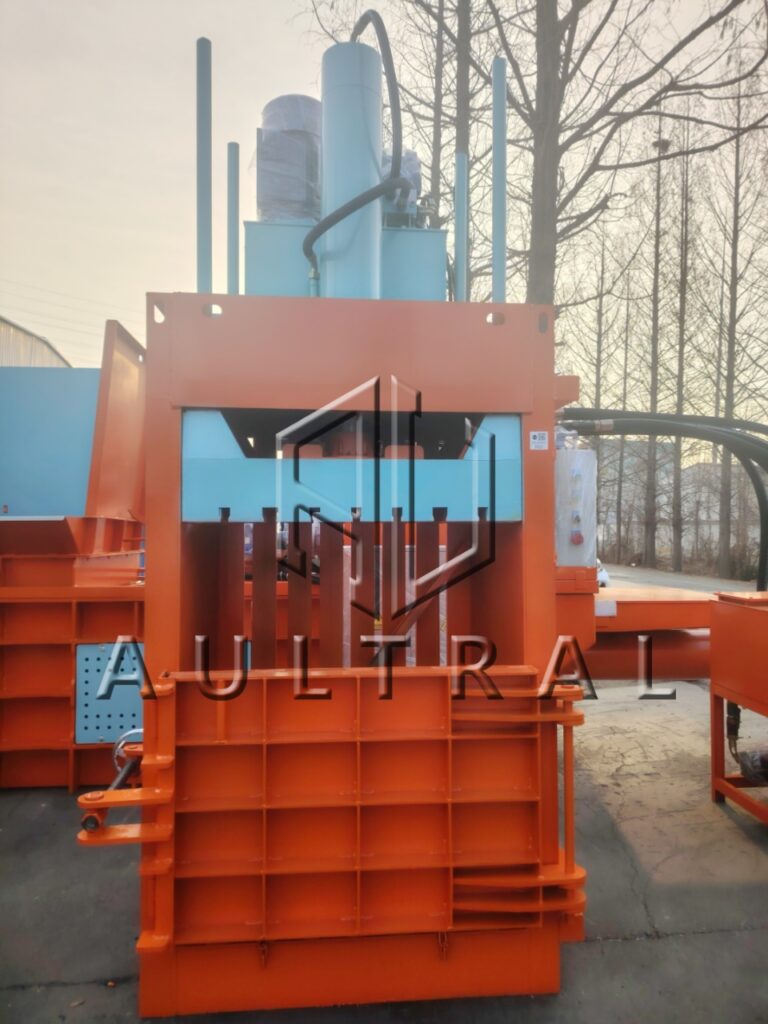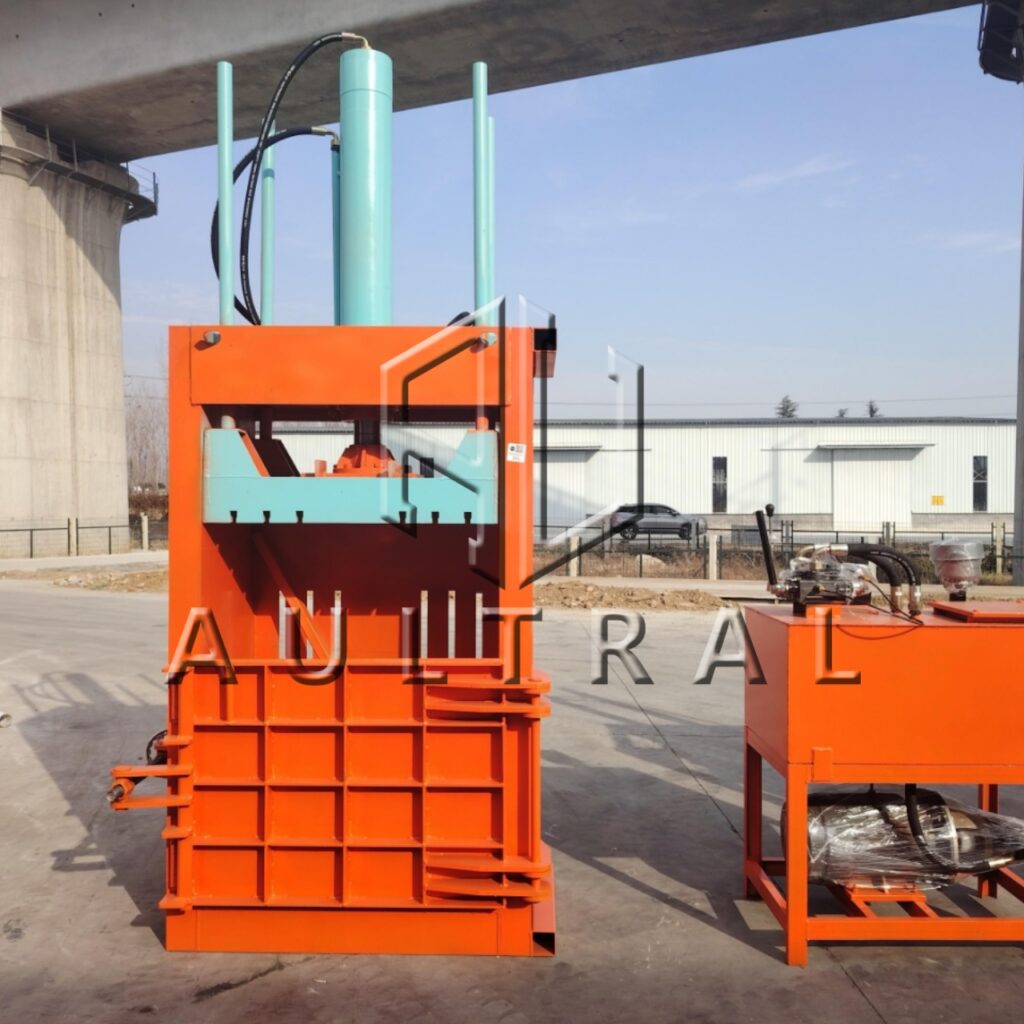Introduction
The recycling industry plays a crucial role in promoting sustainability and reducing waste. Among the various machines used in this sector, vertical balers have become indispensable for efficiently processing recyclable materials. These machines compress materials such as cardboard, plastics, and metals into compact bales, making storage, transportation, and recycling more cost-effective. This blog explores the applications of vertical balers in the recycling industry and analyzes their growing market potential.
Applications of Vertical Balers in Recycling
1. Cardboard and Paper Recycling
Vertical balers are widely used in retail stores, warehouses, and distribution centers to compact cardboard and paper waste. By compressing these materials into dense bales, businesses can reduce storage space, lower transportation costs, and increase the value of recycled materials.
2. Plastic Waste Management
Many recycling facilities use vertical balers to handle plastic bottles, films, and packaging waste. Compact bales are easier to transport to recycling plants, where they can be processed into new products. This helps reduce plastic pollution and supports a circular economy.
3. Metal Scrap Processing
Although horizontal balers are more common for heavy metal recycling, vertical balers are still effective for lighter metals such as aluminum cans and thin steel scraps. They help recycling centers maximize space and improve logistics efficiency.
4. Textile and Fabric Recycling
Fashion and textile industries generate significant fabric waste. Vertical balers compress discarded clothing and textile scraps into manageable bales, facilitating easier recycling or repurposing.

Advantages of Vertical Balers
-
Space Efficiency – Vertical balers have a smaller footprint compared to horizontal balers, making them ideal for businesses with limited space.
-
Cost-Effective – They require lower initial investment and operational costs, making them accessible to small and medium-sized enterprises (SMEs).
-
Ease of Use – Most vertical balers are semi-automatic, requiring minimal training for operation.
-
Versatility – They can handle multiple types of recyclable materials, increasing their utility across industries.
Market Outlook for Vertical Balers
The global recycling industry is expanding rapidly due to increasing environmental regulations, corporate sustainability goals, and consumer demand for eco-friendly practices. As a result, the market for vertical balers is expected to grow significantly in the coming years.



Key Market Drivers:
-
Government Regulations – Many countries are enforcing strict waste management policies, pushing businesses to adopt recycling solutions like vertical balers.
-
Rising Waste Generation – With e-commerce growth and increased consumption, cardboard and plastic waste volumes are surging, boosting demand for efficient baling solutions.
-
Corporate Sustainability Initiatives – Companies are investing in recycling equipment to meet ESG (Environmental, Social, and Governance) goals and improve their green credentials.
-
Technological Advancements – Innovations in baler design, such as energy-efficient models and automated systems, are making them more attractive to recyclers.
Future Trends
-
Smart Balers – Integration with IoT (Internet of Things) for real-time monitoring and predictive maintenance.
-
Increased Automation – More recycling facilities may adopt fully automatic vertical balers to improve efficiency.
-
Expansion in Emerging Markets – Developing countries with growing waste management challenges will likely see higher adoption of vertical balers.
Conclusion
Vertical balers are essential tools in modern recycling operations, offering efficiency, cost savings, and environmental benefits. As global waste volumes rise and sustainability becomes a priority, the demand for these machines will continue to grow. Businesses and recycling facilities that invest in vertical balers today will be well-positioned to meet future waste management challenges while contributing to a greener economy.
By embracing this technology, the recycling industry can move closer to achieving a zero-waste future.

